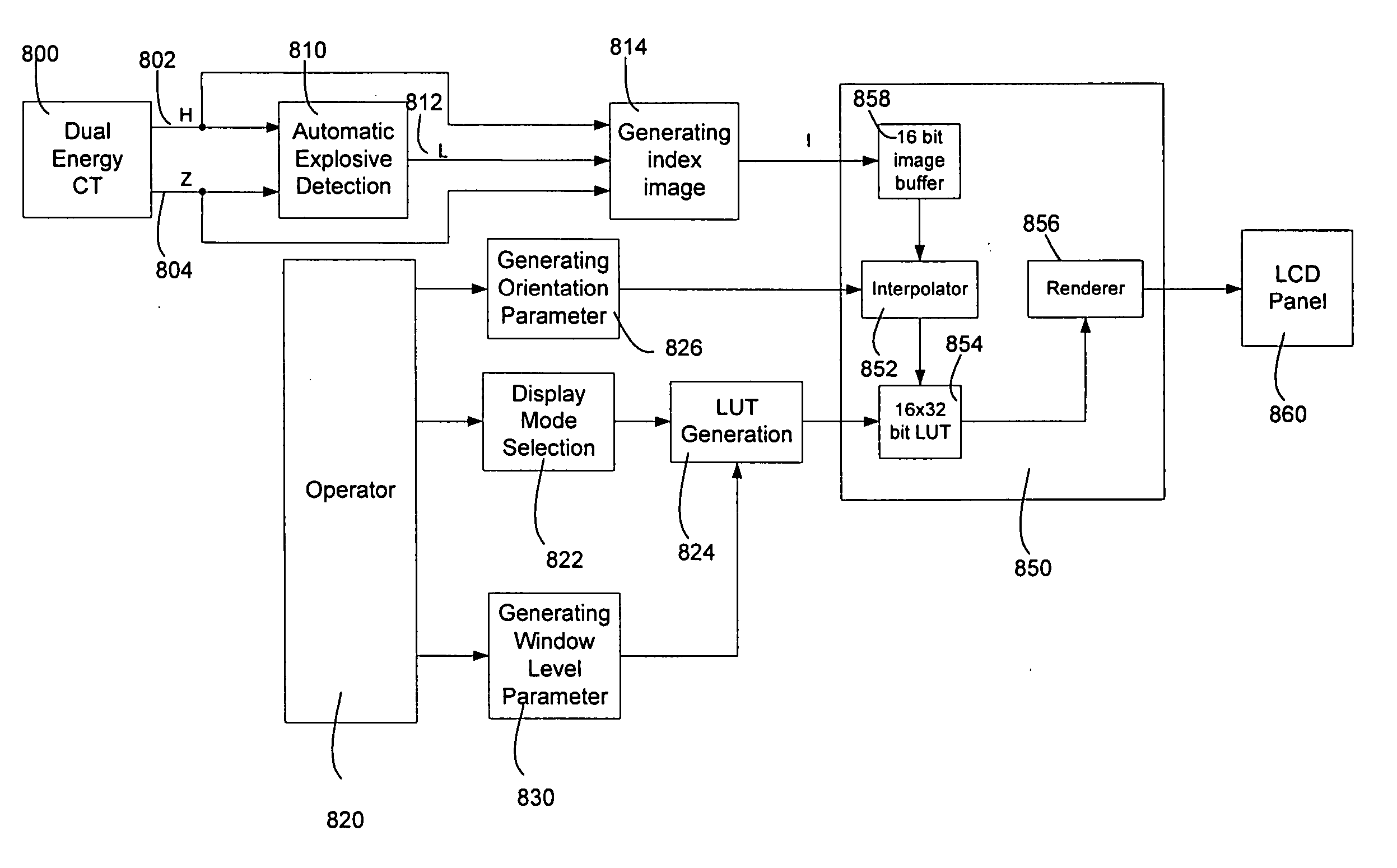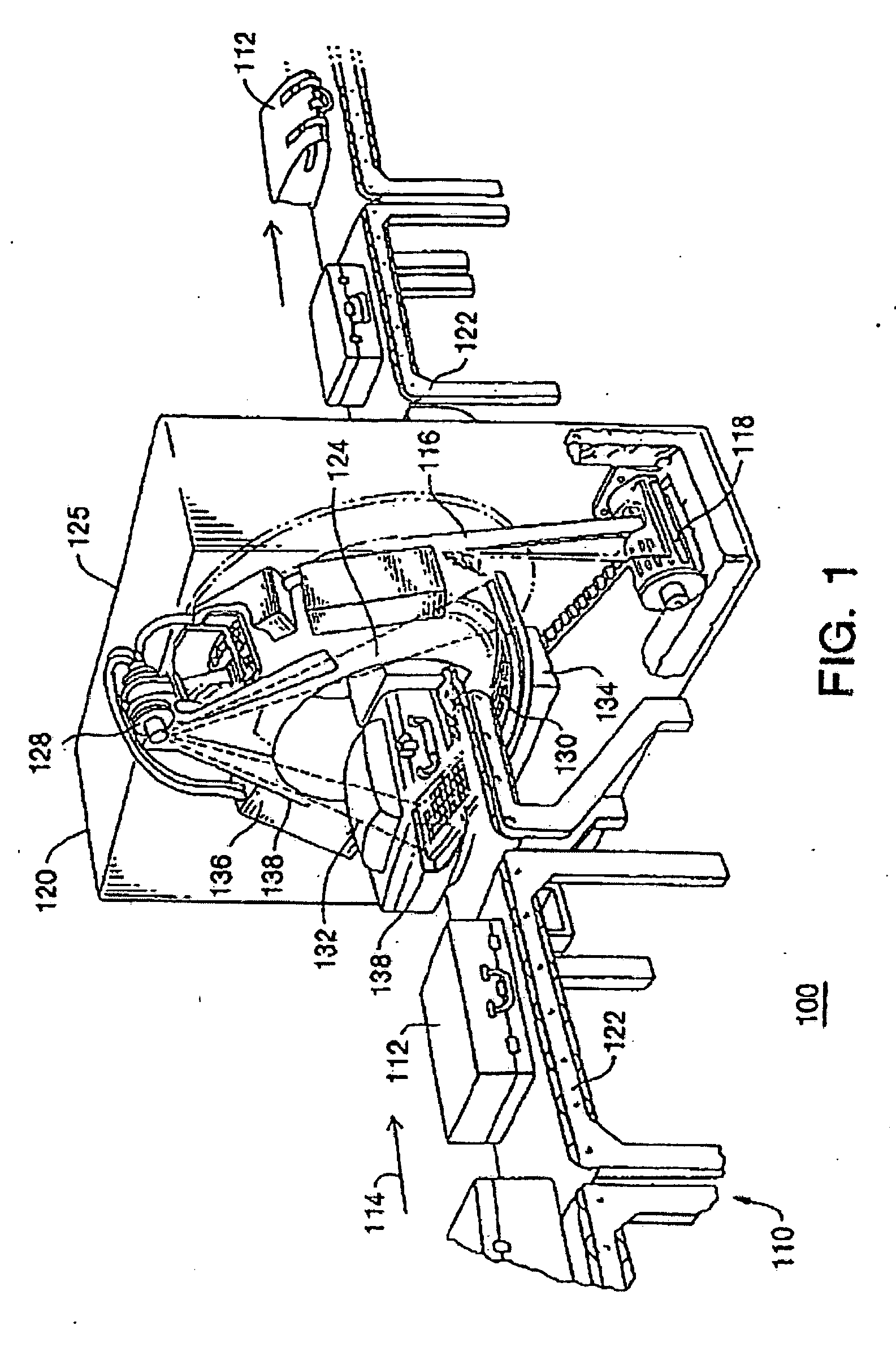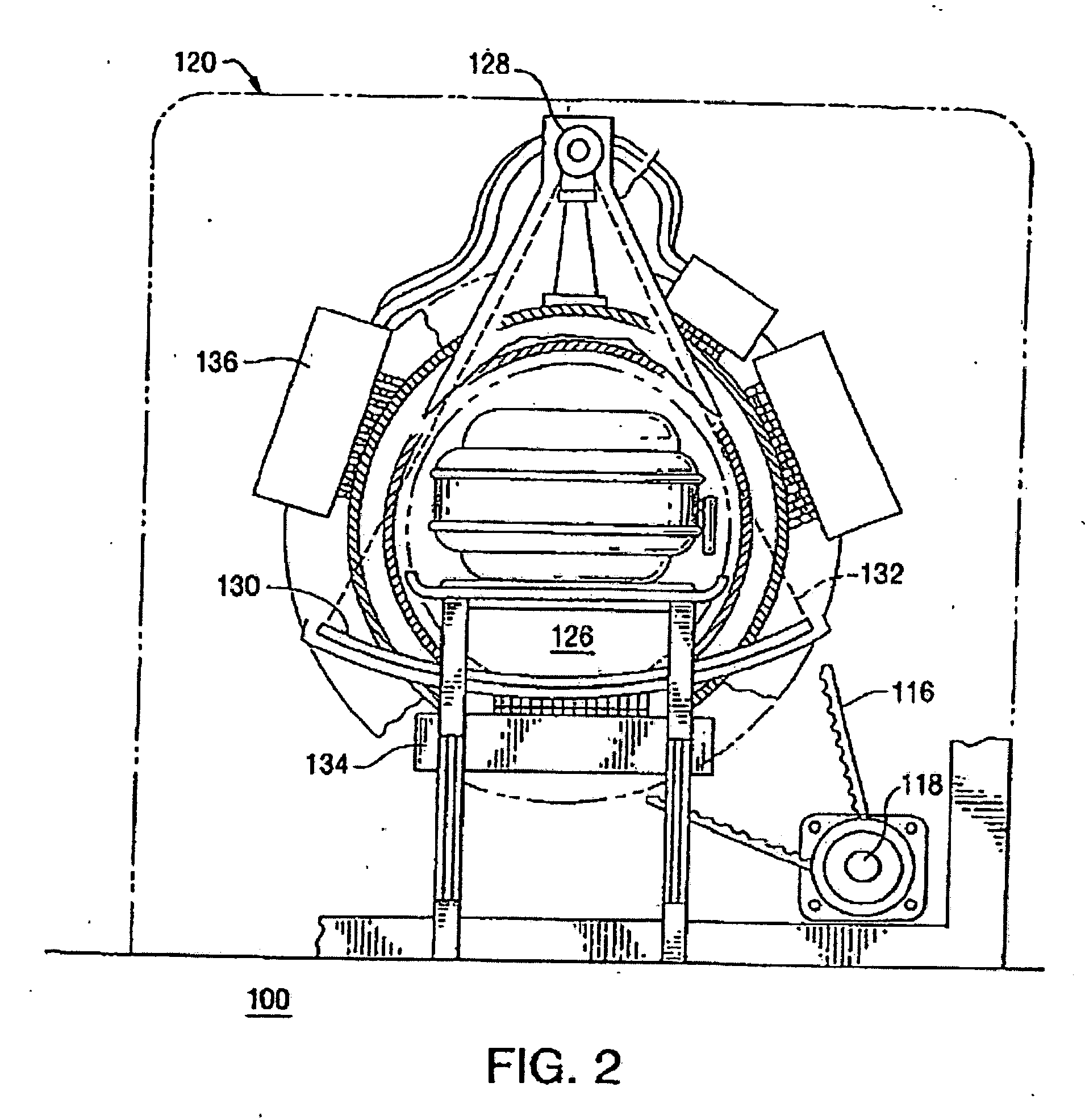Method of and system for 3D display of multi-energy computed tomography images
a computed tomography and multi-energy technology, applied in tomography, instruments, applications, etc., can solve the problems of plastic explosives, baggage scanning systems may be particularly difficult to detect, plastic explosives may be formed into geometric shapes that are difficult to detect,
- Summary
- Abstract
- Description
- Claims
- Application Information
AI Technical Summary
Benefits of technology
Problems solved by technology
Method used
Image
Examples
Embodiment Construction
[0085] In accordance with at least one aspect of the present disclosure, a method and system are provided for displaying volumetric multi-energy CT images from the CT projection data acquired by scanning a set of objects using at least two x-ray spectra, wherein the projection data includes a set of low energy projections and a set of high energy projections. In one preferred embodiment, the method first generates a CT image and a Z (atomic number) image. An automatic explosive detection system generates a label image from the CT image and the Z image. A nonlinear transformation is then performed to transform the CT image, the Z image, and the label image into an index image for display, in which the number of bits per voxel is less than the total number of bits per voxel of the CT image, Z image, and label image. The index image is then loaded into the video memory of the display device once. Orientation angle for the luggage to be displayed on the screen input from an operator is ...
PUM
 Login to View More
Login to View More Abstract
Description
Claims
Application Information
 Login to View More
Login to View More - R&D
- Intellectual Property
- Life Sciences
- Materials
- Tech Scout
- Unparalleled Data Quality
- Higher Quality Content
- 60% Fewer Hallucinations
Browse by: Latest US Patents, China's latest patents, Technical Efficacy Thesaurus, Application Domain, Technology Topic, Popular Technical Reports.
© 2025 PatSnap. All rights reserved.Legal|Privacy policy|Modern Slavery Act Transparency Statement|Sitemap|About US| Contact US: help@patsnap.com



